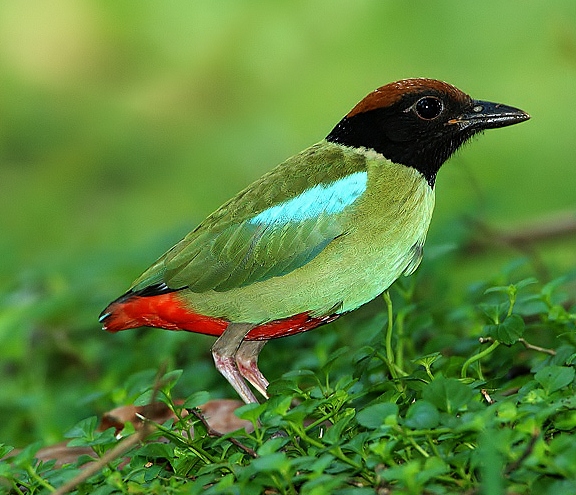 |
| Photo by Chris Li (Flickr) |
Common name:
hooded pitta (en); pita-de-capuz (pt); brève à capuchon (fr); pita encapuchada (es); kappenpitta (de)
Taxonomy:
Order Passeriformes
Family Pittidae
Range:
This Asian species is found from southern China and northern India, throughout Indochina and into Indonesia and Papua-New Guinea. The population in mainland Asia migrate south to winter along the southern parts of the range.
Size:
These birds are 16-19 cm long and weigh 42-70 g.
Habitat:
Hooded pittas are found in various forested and wooded habitats, namely primary rainforests, secondary forests, bamboo forests, swamp forests, mangroves, tropical dry forests, scrublands, plantations and cultivated areas. They occur from sea level up to an altitude of 2.000 m.
Diet:
They forage on the ground, searching for food among the forest litter. They mostly eat adult and larval insects, such as beetles, ants, termites, cockroaches and bugs, but also earthworms, snails and berries.
Breeding:
Hooded pittas breed in February-August. The nest is built by both sexes, consisting of a dome-shaped structure, made of made of roots, bamboo leaves, rootlets, moss, and twigs, and lined with finer material. It is placed on the ground. There the female lays 3-4 white eggs with grey, brown, or dark purple spots, which are incubated by both sexes for 15-16 days. The chicks are fed both parents and fledge 16 days after hatching.
Conservation:
IUCN status – LC (Least Concern)
This species has a very large breeding range and is described as relatively common in parts this range, but rare or localised in other areas. The population has declined rapidly owing to habitat destruction and collection for the cage bird trade, but it is not considered threatened at present.







